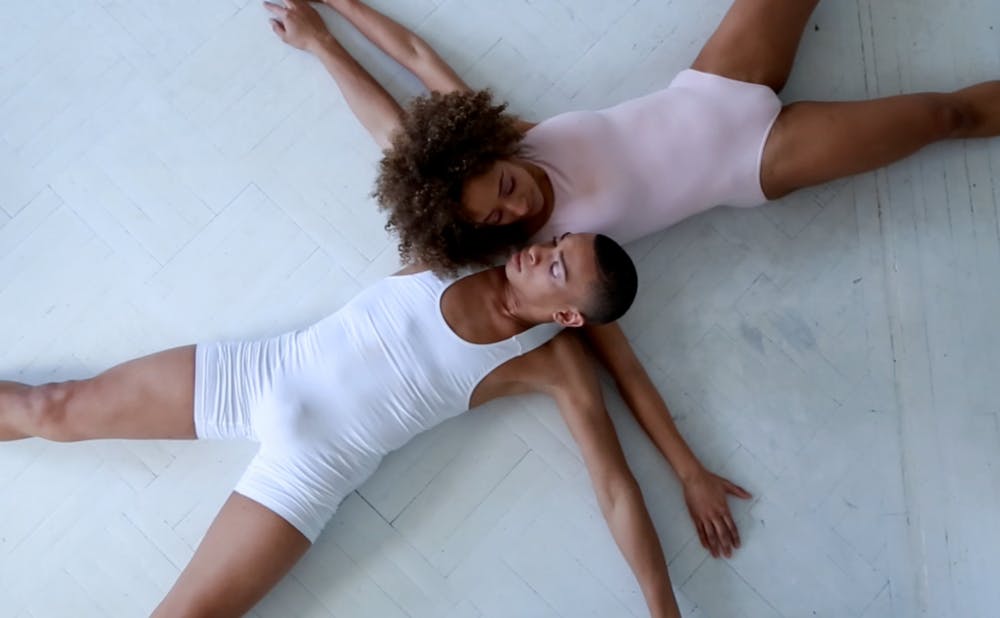Last Sunday, American Dance Festival held the biannual Movies by Movers Film Festival at the Nasher Museum of Art. Despite the rain, the museum’s auditorium was filled with Duke students and other members of the Durham community who came to watch four films selected for the festival.
Festival director and curator Cara Hagan has been organizing the festival for three years. Growing up watching the musical films of Hollywood’s Golden Age, Hagan said she always felt like the camera and moving bodies had a natural affinity for each other. When she was in her twenties, she finally had access to equipment and people who were also interested in the marriage of dance and film, and she began to explore the combination further.
Although it is not well-known to the public, the dance film genre has existed since the late 1800s, Hagan said, when people started making films as an artistic medium. So when Hagan looked for people with whom to make such films and show them to the public, she did not find it difficult to gather individuals to participate.
Most of the films that Hagan receives are between five and 15 minutes long, although she also receives feature-length films. Hagan said it is difficult for a movement-based film to last for longer than 15 minutes while maintaining a coherent plot. Similarly, due to the rise of digital culture, many people prefer short films to watch on social media.
“A lot of people are making tiny films so that they can post them on [social media] and other places where people are not sitting and watching for a very long time,” Hagan said. “Our relationship to the big movie screens has changed a lot over the past 10 years.”
Not all films screened at the festival, however, were fast-paced. ADF gets a wide range of submissions each year, including ethnic dance films and films that tackle social issues. Making selections among those films, Hagan enjoys seeing the different ways filmmakers and choreographers define the dance film genre.
“One of the things that is interesting about screen dance is that even though there is kind of a nebulous accepted definition, it is really up to the artists to decide what ‘screen dance’ is,” Hagan said.
Today, Hagan receives a diverse array of submissions from around the world. Among those, she assesses how the teams of artists captured three-dimensional existence in a two dimensional space and how the actors and actresses communicate a message to the audience.
Lisa Donmall-Reeve’s “Early Mourning,” which screened on Sunday, had a strong narrative centered on a woman who lost her lover. It was based on a longer film that Donmall-Reeve’s friend Ben Hartley choreographed. Throughout “Early Mourning,” a female dancer and a male dancer dance to several pieces of music, from which Hartley got his inspiration for the choreography. When Hartley first brought his work to Donmall-Reeve’s newly formed production company, Donmall-Reeve said she knew it would be a chance for her to try something different.
“I knew it was not dance for dance’s sake, which is very much where I come from. It had to do with storytelling,” Donmall-Reeve said.
Some films did not have any plot at all. Shocked after the Charleston shooting incident, Paul Moon shot “Apostasy” in the small town of Cape Charles, Va., to speak out against gun violence. Throughout most of the film, a male dancer improvises his movement in an abandoned World War II bunker and in front of a structure that resembles a massive gun.
Despite the differences between their respective films, the filmmakers shared their hope for the audience to discover and experience something new from their films.
Bat-Sheva Guez, who directed a film titled “Behind the Wall,” said her film appeals differently to viewers with different experiences. “Behind the Wall” depicts an injured ballerina who discovers a portal to a fantasy world that changes the ways she views her surroundings.
“There are several things I tried to convey with the story-all within the confines of a short film,” Guez said, referring to the film’s allusions to the effects of gentrification and the ballerina’s loss of her identity as a dancer due to injury. “Different aspects of the story will resonate differently with each viewer, and that is what is fun about this process.”
Meanwhile, Yulia Arakelyan, one of the directors of the film, “Waking the Green Sound: a dance film for the trees,” which depicts actors with disabilities performing a ritual in a dreamy setting, had a message to the audience that she and other directors wanted to convey.
“We are interested in creating immersive fantastical worlds that draw people out of present day reality and into a reality where disability exists as a natural variation of the human form or is even a state of unusual power,” she wrote in an email. “We want to invite the audience into a world where people with disabilities are magicians exposing archetypes from many traditions.”
After the festival ended, the audience left the auditorium, some with puzzled expressions on their faces. Others were passionately debating about the characters and symbols presented in the films. The films indeed introduced the audience to a new world of dance onscreen.
Get The Chronicle straight to your inbox
Signup for our weekly newsletter. Cancel at any time.

